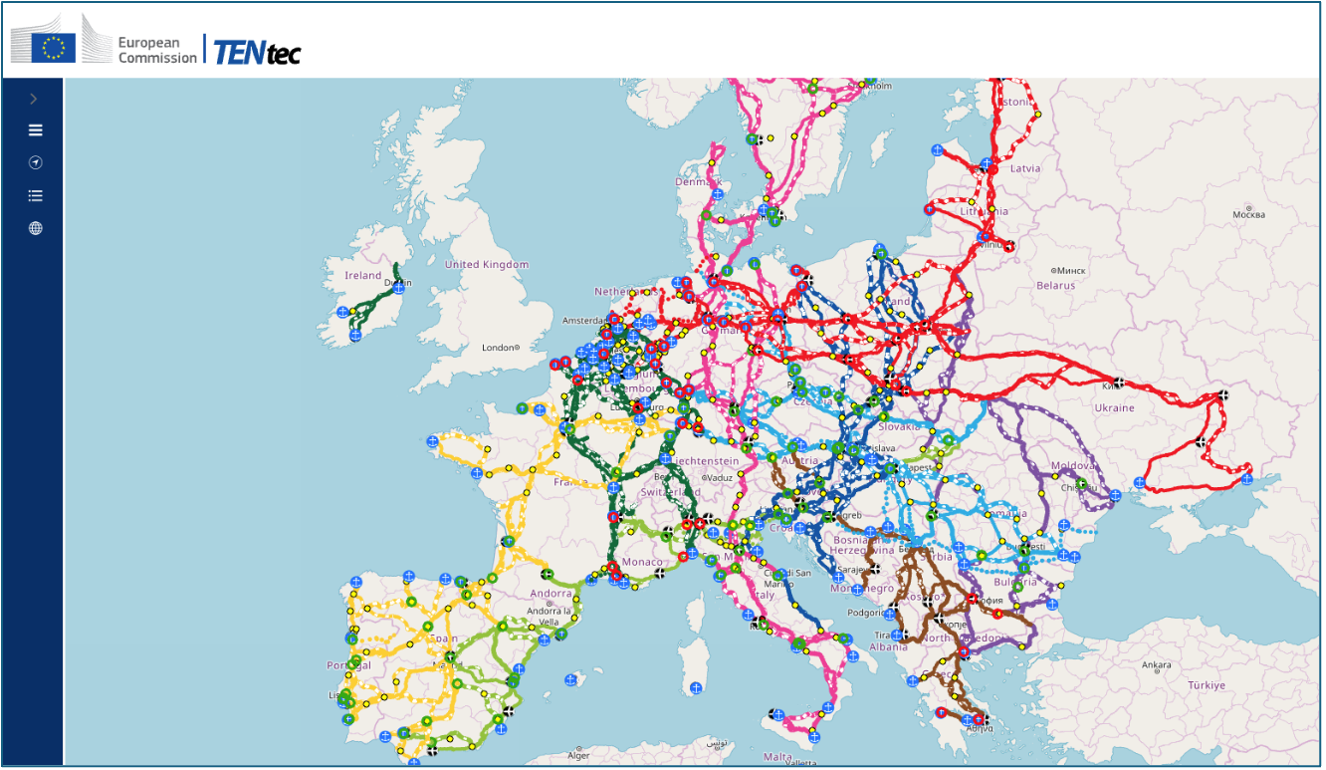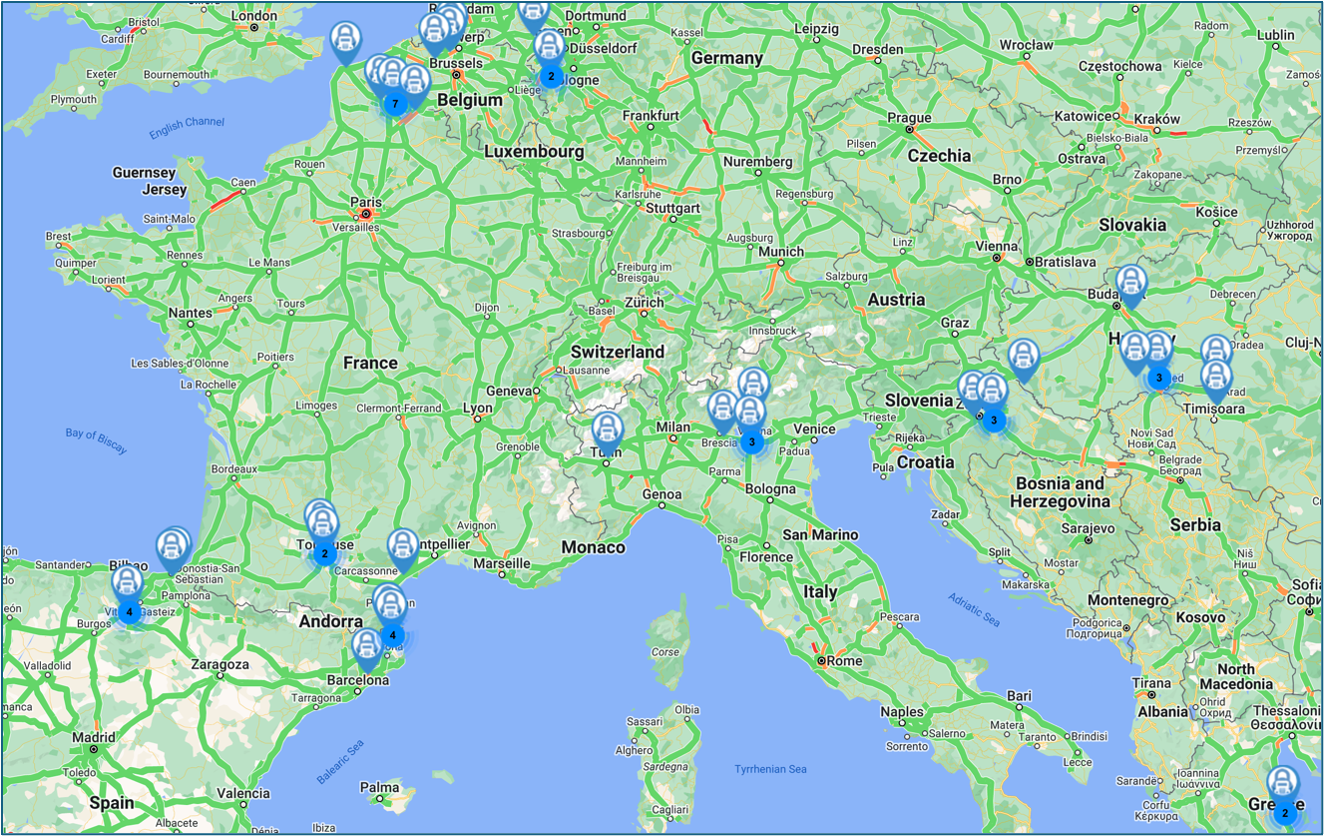
Putting Secure Truck Parking on the Map in Europe
Most supply chain security professionals agree that having access to more secure truck parking places would make a significant contribution to reducing cargo thefts in Europe. The European Commission agrees, too, and is backing this commitment with another significant round of funding to support the development of secure parking locations. Panayiotis Laimos of TAPA EMEA’s Standards & Training Services team explains more…
The EC Connecting Europe Facility (CEF) project was initiated in 2014 with a seven-year plan. During the period 2014-2020, CEF Transport awarded €23.2 billion in grants to co-finance projects of common interest, out of which €11.3 billion was transferred from the Cohesion Fund. CEF is basically the European Union funding mechanism for strategic investment in transport, energy and digitization.

In the transport sector, CEF is focused on the implementation of the Trans-European Transport Network (TEN-T) and aims to support investments in cross-border connections, as well as in the areas at the external borders of the EU. The 2024 call for proposals, similar to previous ones, covers the core, extended core and comprehensive TEN-T networks in the areas of railways, inland waterways, maritime and inland ports, road safety, multimodal freight terminals and passenger hubs, smart and interoperable applications for transport, safe and secure mobility, and infrastructure resilience.
In 2021, a new regulation establishing the CEF for the period 2021-2027 was adopted by the European Union and the budget allocated to CEF transport amounts to €25.8 billion. Of course, not all of this is to support the development of safe and secure parking areas development.
A total of €11.3 billion is earmarked for countries eligible to receive support from the Cohesion Fund that provides support to EU Member States with a gross national income per capita below 90% of the EU-27 average, to strengthen the economic, social and territorial cohesion of the EU. For the 2021-2027 period, the Cohesion Fund concerns Bulgaria, the Czech Republic, Estonia, Greece, Croatia, Cyprus, Latvia, Lithuania, Hungary, Malta, Poland, Portugal, Romania, Slovakia, and Slovenia. More than half of the budget has already been awarded to projects in the 2021-2023 calls.
The million-dollar question
When it comes to what constitutes a safe and secure parking location, we are facing the million-dollar question. A lot of us believe that a parking that is well equipped with security and risk mitigation measures, like fencing and perimeter borders, gates, barriers, CCTV, and Access Control, could be considered as a safe and secure parking. Unfortunately, as we have repeated several times, equipment alone is not enough! Who ensures that this equipment is working properly, who ensures that parking staff know how to operate the equipment, and who reacts to prevent or respond to a security incident? The only way to ensure this is through a certification process offering clear and relevant guidance. So, practically speaking, only certified parking locations can be considered as safe and secure!
As TAPA EMEA members are aware, all currently available parking certification standards like the Association’s Parking Security Requirements (PSR), include different levels of certification to address the level of risk and the market requirements of the specific location.
One way to find out how many parking locations have been benefited from funding is to count the EC SSTPA (Safe & Secure Truck Parking Areas) certifications that are now in place. SSTPA certification is a mandatory requirement when it comes to the release of funding by the European Commission, so the 35 existing certified SSTPA parking sites give an indication of the benefitting locations. In the 2022 and 2023 funding calls, 19 newly constructed parking sites and 2 existing parking upgrade projects have been approved for funding. Work is still ongoing on these projects.
Projects developing in central, south & eastern Europe
These parking locations are mostly spread in western and northern Europe, but lately we also see projects developing in central, southern and eastern Europe as well as in the Iberian Peninsula. So, the network of secure parkings is starting to spread. In the 2023 call alone, the total amount approved for funding exceeded €60 million.
There are five criteria for the evaluation of funding proposals under the EC CEF calls, and one of them is the “maturity” of the project. The requirements, among others, include:
- the readiness and ability of the project to start and finish, according to the scheduled time-plan
- the status of the contracting procedures and of the necessary permits with preference given to projects where these documents are either finalised or very close to approval
- … and information on the availability of additional finance needed to complement the EU fund investment.
We all are aware of project delays that can stem from a variety of factors, from obtaining construction permits, endorsement and approvals by local authorities, and completion of environmental studies – all of significant importance to achieve a positive outcome of a funding proposal.
The EU’s trans-European transport network policy, the TEN-T policy, is a key instrument for planning and developing a coherent, efficient, multimodal, and high-quality transport infrastructure across the EU. The network comprises railways, inland waterways, short sea shipping routes and roads linking urban nodes, maritime and inland ports, airports and terminals. View TENtec map https://webgate.ec.europa.eu/tentec-maps/web/public/screen/home


Projects not located directly on the road TEN-T network or on one of its nodes, are not rejected “by default” but they must justify their utility and contribution to the functioning of the TEN-T network.
€160 million available
The funds available for all approved safe and secure mobility proposals in the 2024 call are €160 million for each one of the general and cohesion envelopes. For the general envelope, the funding percentage can reach 50%, whereas for the cohesion envelope the funding can go up to 85%. Here, we need to note that only elements set out in the service and security standards of the EC SSTPA Standard are supported.
It is also quite important to note that this is a funding project, therefore no payback is required by the investors. This is also one of the reasons that projects go through a very detailed and in-depth due diligence and evaluation process before they are selected for funding and need to be as mature as possible (meaning ready to start) as well as commercially viable when proposals are submitted.
TAPA EMEA closely monitors the development of such projects, as the lack of
secure parking locations across Europe is one of the most important risk factors affecting both the safety of drivers and the security of the cargo moving in supply chains across Europe. Such proposals are expected to take more than 10 man-months to be fully prepared for submission, depending, of course, on the size of the projects and the number of parking locations included in each proposal.
This is why we consider that the 4 months period usually offered from the opening to the closing of each call is not sufficient time for an investor to prepare their full proposal, unless they have previously started preparation work early enough. Additionally, the process to gain approval from Member States varies across EU countries. Some Members States deal with this centrally, whereas others manage the approval process locally. To support this, with each call, the European Commission publishes a list of National Contact Points – View contact points https://cinea.ec.europa.eu/cef-transport-national-contact-points_en.
As the programme is valid until 2027, we strongly recommend that for those organisations unable to submit a complete proposal by the next deadline of 21 January 2025, there is always the opportunity to submit a proposal in the following call, expected to be released by September 2025.
TAPA EMEA support of funding applications
However, be reminded that the preparation of funding proposals is not something that can be completely outsourced to our TAPA EMEA EC Funding and SSTPA team of experts. Our focus is to help guide investors on what needs to be done, and to then offer advice on who is best to do this work. There are also activities that require all team members to work together on to complete them.
For this, we have prepared an indicative responsibilities matrix that tentatively shows who does what, and which covers major topics such as:
- construction permits
- environmental and other studies
- collection of local data (traffic or other)
These need to be owned by the investor.
TAPA EMEA’s expert team can support the work required for:
- traffic studies
- security risk assessments to define the level of certification and support towards the suppliers when it comes to functional requirements of security systems to be installed
As TAPA EMEA is a not-for-profit industry Association, we will only need to cover expenses related to these advisory and support services to members. Therefore, there is a small one-off fee that covers costs for the support during the preparation and submission phase of the proposal, and a separate success fee if the proposal is approved. To utilise these services, a Parking Place Operator must be a member of TAPA EMEA.
The proposal evaluation is a 5-step process, starting with the submission of the proposal and then passing through external and internal evaluation stages before the CEF Committee finalises the projects approved for funding. This process is expected to take 5 to 6 months, but always keep in mind expenses are eligible for funding from the day of the proposal’s submission, provided of course that the proposal is approved for funding.
Last year, TAPA EMEA launched a PSR Equivalent certification initiative which recognises all EU SSTPAs certification holders and issues a relevant PSR Equivalent certificate (depending on the level of certification and the gaps identified). This allows these sites to the listed in the TIS Secure Parking database in such a way that are clearly recognisable and accessible for members looking to book parking places. Not all SSTPA holders have yet responded to this opportunity, but we continue to chase them.
If you wish to find out more about how TAPA EMEA can support a funding application, contact us at info@tapaemea.org

















